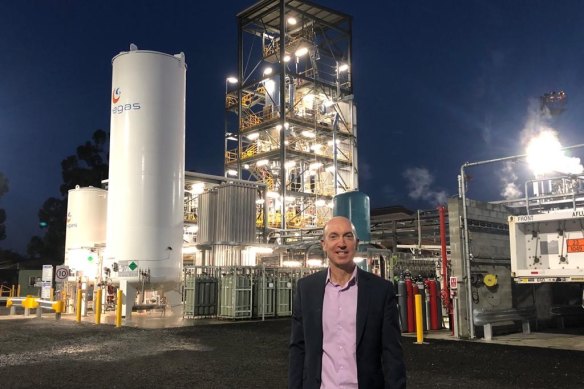Billion-dollar hydrogen plant lifts Gippsland’s job prospects
The Latrobe Valley’s fading coal industry is set to be reignited, with Japan’s green energy fund kick-starting a billion-dollar commercial-scale liquefaction and shipping facility in Victoria’s Port of Hastings. It will process hydrogen extracted from coal, creating the world’s first liquefied hydrogen supply chain.
The joint venture, led by Japan’s largest industrial conglomerates, will use carbon capture and storage technology to sequester CO2 in Bass Strait. It will also send the super-cooled hydrogen extracted from coal in purpose-built bulk carriers out of Hastings to Kawasaki, the Asian nation’s heavy industry heartland.

Hydrogen – which emits only water when it burns – has been touted as a promising future tool to decarbonise heavy industry, provided the method of making it is also emissions-free. Governments and corporations are looking to hydrogen for its ability to store and transport energy generated from renewables and clean up difficult-to-decarbonise parts of the economy.
Japan, the top buyer of Australian liquefied natural gas, has set a target of “net-zero” emissions by 2050 and is betting on hydrogen to diminish the role of fossil fuels. Four of the country’s industrial titans – Kawasaki Heavy Industries, Iwatani Corporation, J-Power and Sumitomo Corporation – are backing the venture, which will produce, liquefy and deliver hydrogen in a world-first integrated supply chain.
The Port of Hastings hydrogen terminal has evolved from a $500 million pilot project – the Hydrogen Energy Supply Chain – led by a consortium including Japan’s J-Power, Kawasaki Heavy Industries, Shell and AGL that has successfully demonstrated the conversion of Latrobe Valley brown coal into hydrogen gas, exporting the fuel to Japan in the world’s first purpose-built liquefied hydrogen carrier last year.
“The hydrogen economy has the potential to create thousands of jobs in Victoria and play a critical role in global emissions reduction,” Victorian Trade and Investment Minister Tim Pallas said. Both federal and state governments have tipped funds into the pilot project.
Japan’s $24 billion Green Innovation Fund has committed $2.35 billion to help build the hydrogen facility in Hastings and construct a 160,000-cubic-metre-capacity bulk carrier ship capable of floating the liquid hydrogen to Kawasaki.
The bulk carrier vessel will be powered by its hydrogen cargo, without the need for fossil fuels. The joint venture is investigating potential sites in Hastings on which to build the terminal and liquefaction plant.
“We have already started investigating and researching to find the exact location of the terminal in Hastings. We really want to minimise any environmental impact to that local area,” said Yuko Fukuna, a manager at Japan Suiso Energy, a subsidiary of Kawasaki Heavy Industries and Iwatani Corporation.
“We are now aiming to start operations by late 2020s,” she said.
The terminal will be paired with a hydrogen production plant in the Latrobe Valley that will capture carbon emissions before they enter the atmosphere and bury them in depleted gas reservoirs in Bass Strait, says Jeremy Stone, a non-executive director with J-Power. Combined, the hydrogen plant and terminal are expected to create 1000 ongoing jobs.
The venture would initially produce 40,000 tonnes a year of carbon-neutral hydrogen before ramping up production to 225,000 tonnes, an output that would prevent about 1.8 million tonnes a year of CO2 from being released into the atmosphere, equivalent to the emissions of about 350,000 petrol cars, Stone said.
Carbon capture and storage is a divisive area of climate policy that frequently draws criticism from environmentalists who argue the technology’s success at large scale is unproven and fear it could prolong the use of fossil fuels.
Climate groups and some hydrogen developers insist that “green” hydrogen – produced when renewable energy powers an electrolyser to split water into hydrogen and oxygen – is the only clean form of the fuel. But hydrogen produced from renewable energy is still two to three times more expensive than that produced from coal.
Japan has an import target price of $US3 a kilo for hydrogen.
With Nick Toscano
The Market Recap newsletter is a wrap of the day’s trading. Get it each weekday afternoon.
Most Viewed in Business
Source: Thanks smh.com